Read Our
Winery Blog
Blog
This is your blog page, add intro text before through the content management tools or add blog posts through the blogging tools:
A year in a winery... one month at a time... MARCH
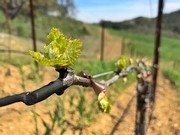 March is the month when wineries seriously start to emerge from the hibernation of the winter months. It is a time of great anticipation, nervousness, planning, and all the work starts to shift gears.
March is the month when wineries seriously start to emerge from the hibernation of the winter months. It is a time of great anticipation, nervousness, planning, and all the work starts to shift gears.
In the vineyard, it can be a very tricky time depending on mother nature. In 2021 a mild temperate start to the year spurred growth early and everything seemed to time out nicely but persistent drought conditions stress the region. In 2022 what started out mild suddenly dipped back towards freezing causing damage to some vineyards which combined with ongoing drought conditions resulted in significant drops in yields throughout the region, the grape growers were not happy.
 Now 2023 has started out so very differently. Persistently cold in the winter months without extreme freezing is a welcome change for the vines which have had a well earned rest after the last season. The evolutionary timeline has landed close to what should be standard, as the freezing temperatures started to fade in late March. Glorious rains have replenished the parched soils with quantities not seen in decades. Some over ambitious growers planted well into the wetlands taking advantage of water shortages, and some of those vineyards remained submerged under water for weeks. The rest of the vineyards are in full recovery mode and things look great for the coming season.
Now 2023 has started out so very differently. Persistently cold in the winter months without extreme freezing is a welcome change for the vines which have had a well earned rest after the last season. The evolutionary timeline has landed close to what should be standard, as the freezing temperatures started to fade in late March. Glorious rains have replenished the parched soils with quantities not seen in decades. Some over ambitious growers planted well into the wetlands taking advantage of water shortages, and some of those vineyards remained submerged under water for weeks. The rest of the vineyards are in full recovery mode and things look great for the coming season.
Some parts of Sonoma County started to welcome bud break by mid March, and the rest have awakened slowly but surely in preparation for what is anticipated to be a great year. The landscape is green, the cover crops are vibrant which will provide some nice backup fertilization as they get tilled back in between the vine rows, and the new growth on the vines is rising fast.
 Making predictions of what this years wines will be so premature, and frankly meaningless at this time. A lot can happen between now and harvest. What we do know, is that so far..... everything is looking great.
Making predictions of what this years wines will be so premature, and frankly meaningless at this time. A lot can happen between now and harvest. What we do know, is that so far..... everything is looking great.
In the winery, bottling is rolling steadily along as more and more previous vintages find their way to stability for future enjoyment. As with every step of the process, this can be a tricky time. You have invested so much time and energy into making the best wine you possibly can. Now you had better make sure that you preserve that incredible goodness in a way that will hold for years to come. Our sophisticated bottling line can handle between 1000 and 2000 cases a day but a lot of moving parts have to synchronize with a skilled staff for things to go smoothly. The slightest hiccup and everything grinds to a halt, but when everything works it is mesmerising to behold.
 In its' simplest form, you place your wine into a tank in close proximity to the bottling line. Attach a hose, and a pump and connect it to the bottling line. Dump a case of empty bottles at the beginning of the line (and continue doing so for the duration of the run). Fill up your cork hopper and label spool. Turn on the machine and watch it work! The bottles travel down a channel, get purged with gas, filled with wine, corks inserted, capsules sealed, labels applied, and at the exit channel someone puts those bottles back into the case and as it rolls down the exit chute it gets taped and labeled and then someone lifts and stacks onto a waiting pallet. Now imagine you are the guy, the last link in the chain lifting those boxes, 33 pounds at a time. At the end of the day you have had quite the workout having moved 15 tons of product!!!!
In its' simplest form, you place your wine into a tank in close proximity to the bottling line. Attach a hose, and a pump and connect it to the bottling line. Dump a case of empty bottles at the beginning of the line (and continue doing so for the duration of the run). Fill up your cork hopper and label spool. Turn on the machine and watch it work! The bottles travel down a channel, get purged with gas, filled with wine, corks inserted, capsules sealed, labels applied, and at the exit channel someone puts those bottles back into the case and as it rolls down the exit chute it gets taped and labeled and then someone lifts and stacks onto a waiting pallet. Now imagine you are the guy, the last link in the chain lifting those boxes, 33 pounds at a time. At the end of the day you have had quite the workout having moved 15 tons of product!!!!
A year in a winery... one month at a time... FEBRUARY
February, one of those unpredictable months when you need to be flexible, be able to pivot from one project to another, remember valentines day or else, and get things done before time runs out as February always seems to be short for some reason.
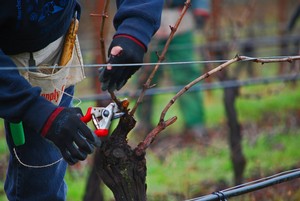 One of the primary project to consider is pruning, which invites us all to become seers, or read the farmers almanac, or just wait for a convenient opening. Pruning should happen during the dormant phase of the vine, so generally occurs between December and March in the Russian River area. Left on its own, a grapevine will sprawl and spread itself out, producing as many leaves and as much fruit as it can. You might be thinking, “More grapes! What’s wrong with that?” But unchecked grapevines yield more grapes than grapegrowers are looking for—huge crops can ripen unevenly and usually result in grapes that lack the intensity of flavor needed to make great wine. Pruning helps focus the vine’s energy on producing a smaller volume of the best grapes possible. The process is best left to skilled professionals, and can have a significant impact on yields, quality, and the health of the vine.
One of the primary project to consider is pruning, which invites us all to become seers, or read the farmers almanac, or just wait for a convenient opening. Pruning should happen during the dormant phase of the vine, so generally occurs between December and March in the Russian River area. Left on its own, a grapevine will sprawl and spread itself out, producing as many leaves and as much fruit as it can. You might be thinking, “More grapes! What’s wrong with that?” But unchecked grapevines yield more grapes than grapegrowers are looking for—huge crops can ripen unevenly and usually result in grapes that lack the intensity of flavor needed to make great wine. Pruning helps focus the vine’s energy on producing a smaller volume of the best grapes possible. The process is best left to skilled professionals, and can have a significant impact on yields, quality, and the health of the vine.
Timing is important, as pruning will be a significant factor in productivity for the season. If low temperatures and strong winds follow pruning, it’s very possible that the pruned parts will freeze. This may make you lose all or part of your crop. If you prune in early December, and suddenly we have a warm february and March, the vineyard may want to bud early. 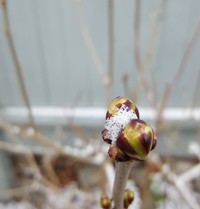 If this happens, and then freezing temperatures manifest in later March or April there is the danger of the buds being damaged, not good. You certainly want to prune before bud break, so if you wait until March you may be cutting back emerging growth, not optimal. Prune juuuust befor bud break, and you might push back bud break by a week or two, which in turn may push harvest by a couple of weeks on the ripening end if this is desired.
If this happens, and then freezing temperatures manifest in later March or April there is the danger of the buds being damaged, not good. You certainly want to prune before bud break, so if you wait until March you may be cutting back emerging growth, not optimal. Prune juuuust befor bud break, and you might push back bud break by a week or two, which in turn may push harvest by a couple of weeks on the ripening end if this is desired.
This is also a time of planning, as some of the decisions you are about to make will have an impact on yields, quality, and overall health of the vines. It is a delicate balance between the farmer wanting optimal yields without compromising the quality, and the winemaker to get the perfect balance of intensity and complexity by limiting yields and still making realistic numbers. Compromise can work for both.
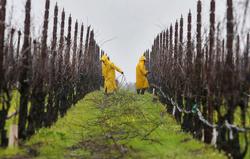
 Pruning is generally completed by a scheduled vineyard management crew, which leaves the winemaking time free to work on other projects. Aside from the day to day maintenance (remember the constant cleaning and sanitizing?) it is also a good time to schedule the bottling of some previous vintages. If things have gone smoothly, some Rosé's and Sauvignon Blancs may have been finished from the most recent vintage, and are often some of the first, brightest and freshest releases from a vintage.
Pruning is generally completed by a scheduled vineyard management crew, which leaves the winemaking time free to work on other projects. Aside from the day to day maintenance (remember the constant cleaning and sanitizing?) it is also a good time to schedule the bottling of some previous vintages. If things have gone smoothly, some Rosé's and Sauvignon Blancs may have been finished from the most recent vintage, and are often some of the first, brightest and freshest releases from a vintage.
Some wines from the previous vintage will be timing out to have barrel aged for some 16-18 months and be ready for bottling too. As long as the wine is still in barrels or tanks, it needs regular attention to ensure no compromise to quality. Moving the wines to bottle means that you will have a completed and stable product, ready for bottle aging or release at your leisure but your work on that wine is done!
This is also a good time to start planning out your year with harvest and production goals, start setting up contracts, work out your numbers for production needs such as new barrels, but most importantly, start planning what you plan to make this year. By starting your planning early, it gives you plenty of time to make adjustments, additions, reduce or increase contracts, and generally know what your production goal is for the year. It seems like a long way off, but harvest will sneak up on you and if you have insufficient planning, the chaos of harvest will take its toll on even the most seasoned veteran.
From a hospitality perspective, this is the slowest time, so there is plenty of time for planning there too. Entering select competitions, submitting to publications that may go to print in the fall, hospitality outreach to partner with local lodgings for entertaining opportunities.
Also February, a great time for processing a wine club allocation. The celebrations of Oct, Nov & Dec have taken their toll on everyones wine supplies, so it is time to be proactive and help everyone replenish their favorites. Our quarterly club processes in February, May, August and November. Generally fairly co-operative months climate wise for most of the country, and the months when everyone needs their thirst quenched!..... well those, and the other months that someone might get thirsty for some fine wine.
A Year in a Winery... one month at a time... JANUARY
Wineries.... the glamorous end of farming! With all the finesse and sophistication that abounds in the wine industry, it is quite easy to forget that it all starts with simple farming. Nature has blessed us with a fruit that when handled correctly transforms into quite possibly the most studied, analyzed, and dissected consumable in existence.
Winemaking, at its most rudimentary level is actually quite simple, and the fundamentals of winemaking are essentially the same for everyone. The scenery, the scale, the peripherals may vary some, but the start and the finish are pretty much the same. So, that being said, let's take an excursion broken down into monthly increments of what is quite typical at a small family owned winery.
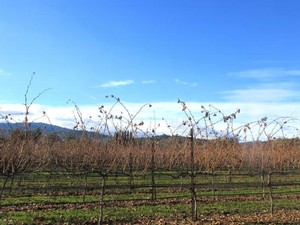 JANUARY.
JANUARY.
Not the most exciting month to start with in the wine world, but for chronology sake we will follow the standard "Gregorian" Calendar, and for our purposes we will state that this outline is based on the cycle of a Sonoma County Green Valley Winery..... namely Ektimo.
January is a time of dormancy in the vineyard. Only the clingiest of shriveled leaves remain until a stiff breeze or sturdy rain strips the canes to just the bare branches rising up from the trunk and outstretched arms of the vine. From leaf fall to the beginning of growth in spring, grapevines are dormant and consist entirely of woody tissue. As temperatures fall, vines gradually become more cold hardy, and sugars are converted to starch to be stored for the winter, mostly in perennial structures such as roots and trunks. After leaf fall, vines continue to acclimate to cold weather, but no more carbohydrate accumulation occurs. Relatively little activity occurs during this period. Root growth can still occur unless soil temperatures are too cold to support growth, but it is the time of the year when vineyards remain silent.
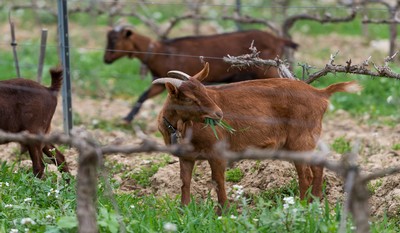 However, while all the local wildlife runs unopposed in the fields, there is always something going on in the wine cycle. I the winery, all the primary fermentations are done and the symphony of sounds that ring through the winery are all but silent. January is where attention to detail becomes the challenge of the team. During this time, tiny chemical changes are tediously monitored, and older wines delicately maintained to age beautifully and folow a delicate path to perfect maturity. Wines still in the tanks are analyzed and kept temperature stable to ensure freshness and peak quality.
However, while all the local wildlife runs unopposed in the fields, there is always something going on in the wine cycle. I the winery, all the primary fermentations are done and the symphony of sounds that ring through the winery are all but silent. January is where attention to detail becomes the challenge of the team. During this time, tiny chemical changes are tediously monitored, and older wines delicately maintained to age beautifully and folow a delicate path to perfect maturity. Wines still in the tanks are analyzed and kept temperature stable to ensure freshness and peak quality.
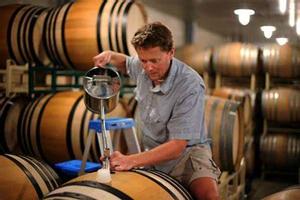
With hundreds, sometimes thousands of barrels, each one is regularly inspected, topped, and dated as having been serviced on a specific timeline. The inspections also include a visual to see if any flaws are being exposed where wine may be leaking through tiny fissures which inform us it is time for a barrel to be retired.
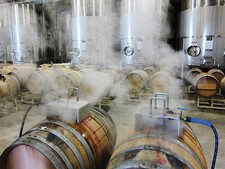
Cleanliness is important, and this is a task that must be fastidiously undertaken year round. Neglect sanitation at your peril as all those hard days and nights of work and effort can easily be erased if any bacterial growths take hold and contaminate your wines. Household cleansers are a no-no as in the wine world they can just as easily contaminate as clean. The most common cleaning agents you will see in a winery are water/steam, hydrogen peroxide and alcohol. Most of the water used in winemaking believe it or not is in cleaning not growing. Wineries have become quite adept at recycling the water used in sanitizing, moving it back into the water table where it replenishes aquifers and even irrigates vineyards.
On the hospitality side of things, January tends to be dreary, quiet and slow. Gone are the holiday celebrations of the preceding months, and as one of the slowest months for tourism, this is actually a brilliant time to have an in depth visit with your favorite winery. You will likely get the undivided attention of your host, and you can taste at your leisure and get informed on any expectations for the coming year. This slow period in mind, the Russian River Wineroad takes advantage of this time of year by presenting "Winter Wineland". It is a ticketed event in late January where the wineries show their more leisurely side for an event, and usually present the hearty wine selections to get you through those short days and long nights. Well, what else are you going to do in January?
So...... January, keep it clean.